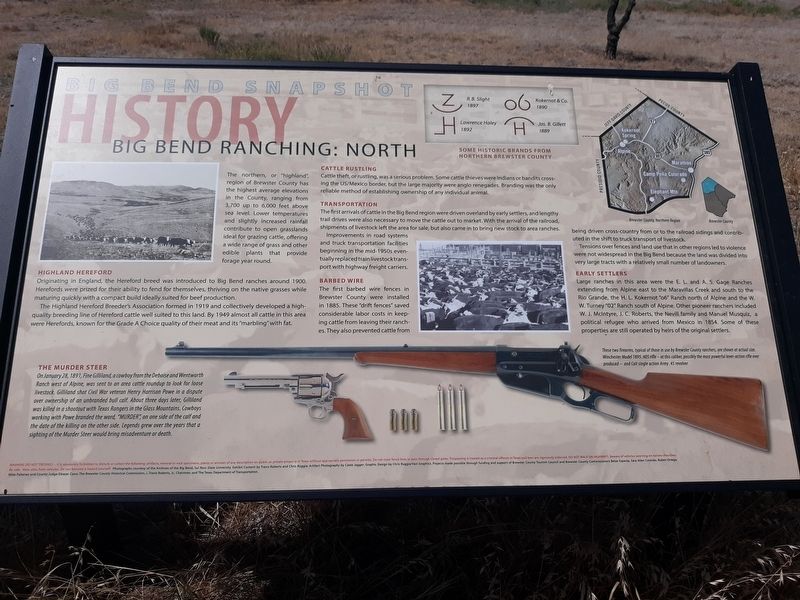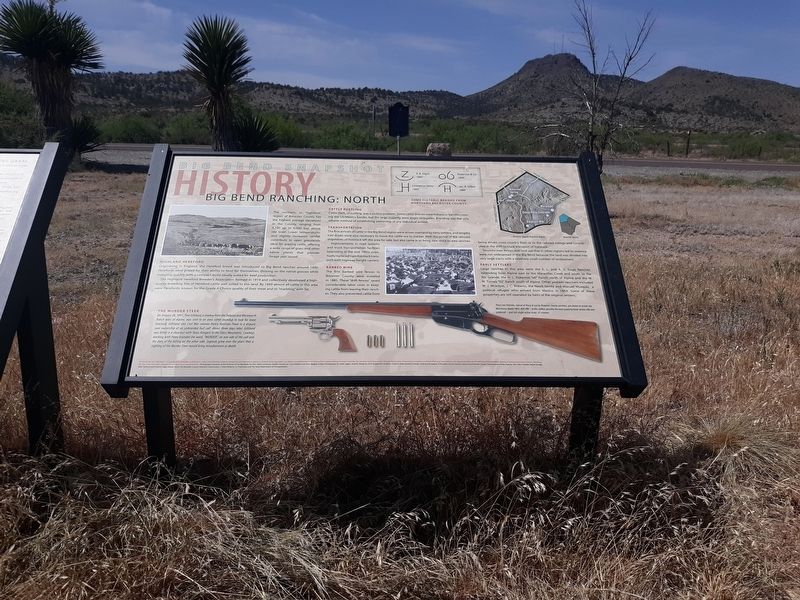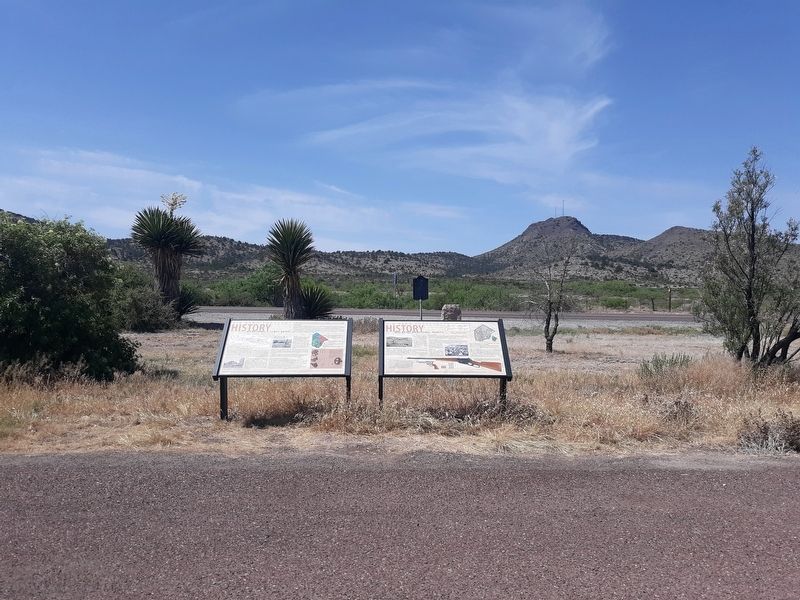Big Bend Ranching: North
Big Bend Snapshot History
The northern, or "highland", region of Brewster County has the highest average elevations in the County, ranging from 3,700 up to 6,000 feet above sea level. Lower temperatures and slightly increased rainfall contribute to open grasslands ideal for grazing cattle, offering a wide range of grass and other edible plants that provide forage year round.
Highland Hereford
Originating in England, the Hereford breed was introduced to Big Bend ranches around 1900. Herefords were prized for their ability to fend for themselves, thriving on the native grasses while maturing quickly with a compact build ideally suited for beef production.
The Highland Hereford Breeder's Association formed in 1919 and collectively developed a high-quality breeding line of Hereford cattle well suited to this land. By 1949 almost all cattle in this area
were Herefords, known for the Grade A Choice quality of their meat and its "marbling” with fat.
The Murder Steer
On January 28, 1891, Fine Gilliland, a cowboy from the Deboise and Wentworth
Ranch west of Alpine, was sent to an area cattle roundup to look for loose
livestock. Gilliland shot Civil War veteran Henry Harrison Powe in a dispute
over ownership of an unbranded bull calf. About three days later, Gilliland
was killed in a shootout with
Cattle Rustling
Cattle theft, or rustling, was a serious problem. Some cattle thieves were Indians or bandits crossing the US/Mexico border, but the large majority were anglo renegades. Branding was the only reliable method of establishing ownership of any individual animal.
Transportation
The first arrivals of cattle in the Big Bend region were driven overland by early settlers, and lengthy trail drives were also necessary to move the cattle out to market. With the arrival of the railroad,
shipments of livestock left the area for sale, but also came in to bring new stock to area ranches.
Improvements in road systems
and truck transportation facilities beginning in the mid-1950s eventually replaced train livestock transport with highway freight carriers.
Barbed Wire
The first barbed wire fences in Brewster County were installed
in 1885. These "drift fences” saved considerable labor costs in keeping cattle from leaving their ranches. They also prevented cattle from being driven cross-country from or to the railroad sidings and contributed in the
Tensions over fences and land use that in other regions led to violence were not widespread in the Big Bend because the land was divided into very large tracts with a relatively small number of landowners.
Early Settlers
Large ranches in this area were the E. L. and A. S. Gage Ranches
extending from Alpine east to the Maravillas Creek and south to the
Rio Grande, the H. L. Kokernot "o6" Ranch north of Alpine and the W.
W. Turney "02” Ranch south of Alpine. Other pioneer ranchers included
W. J. McIntyre, J. C. Roberts, the Nevill. family and Manuel Musquiz, a
political refugee who arrived from Mexico in 1854. Some of these
properties are still operated by heirs of the original settlers.
These two firearms, typical of those in use by Brewster County ranchers, are shown at actual size. Winchester Model 1895 .405 rifle – at this caliber, possibly the most powerful lever-action rifle ever produced – and Colt single action Army .45 revolver
Topics. This historical marker is listed in these topic lists: Agriculture • Animals • Industry & Commerce • Settlements & Settlers. A significant historical date for this entry is January 28, 1891.
Location. 30° 22.517′ N, 103° 32′ W. Marker is in Alpine, Texas, in Brewster County. Marker is on U.S. 90, on
Other nearby markers. At least 8 other markers are within 8 miles of this marker, measured as the crow flies. Ranching in the Big Bend (a few steps from this marker); Ancient Rocks Boundary (within shouting distance of this marker); Brewster County (within shouting distance of this marker); The Late Spanish Entradas (approx. 5.6 miles away); Early Spanish Entradas (approx. 5.6 miles away); Early Human Habitation (approx. 7 miles away); Lawrence Sullivan Ross (approx. 7.1 miles away); Burgess' Water Hole (approx. 7˝ miles away). Touch for a list and map of all markers in Alpine.
Credits. This page was last revised on January 2, 2021. It was originally submitted on January 1, 2021, by Craig Doda of Napoleon, Ohio. This page has been viewed 146 times since then and 12 times this year. Photos: 1, 2, 3. submitted on January 1, 2021, by Craig Doda of Napoleon, Ohio. • J. Makali Bruton was the editor who published this page.


